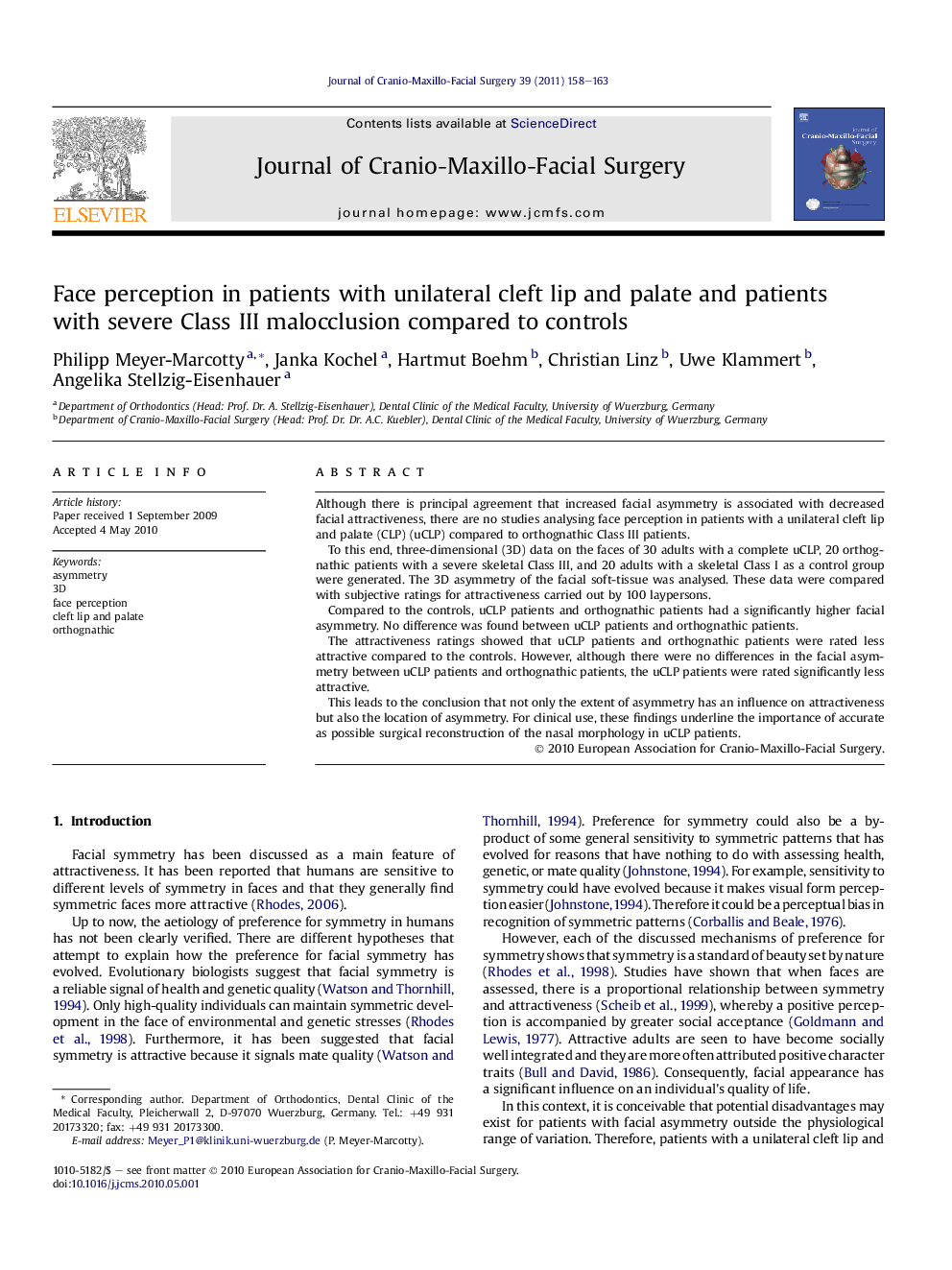| Article ID | Journal | Published Year | Pages | File Type |
|---|---|---|---|---|
| 3143246 | Journal of Cranio-Maxillofacial Surgery | 2011 | 6 Pages |
Although there is principal agreement that increased facial asymmetry is associated with decreased facial attractiveness, there are no studies analysing face perception in patients with a unilateral cleft lip and palate (CLP) (uCLP) compared to orthognathic Class III patients.To this end, three-dimensional (3D) data on the faces of 30 adults with a complete uCLP, 20 orthognathic patients with a severe skeletal Class III, and 20 adults with a skeletal Class I as a control group were generated. The 3D asymmetry of the facial soft-tissue was analysed. These data were compared with subjective ratings for attractiveness carried out by 100 laypersons.Compared to the controls, uCLP patients and orthognathic patients had a significantly higher facial asymmetry. No difference was found between uCLP patients and orthognathic patients.The attractiveness ratings showed that uCLP patients and orthognathic patients were rated less attractive compared to the controls. However, although there were no differences in the facial asymmetry between uCLP patients and orthognathic patients, the uCLP patients were rated significantly less attractive.This leads to the conclusion that not only the extent of asymmetry has an influence on attractiveness but also the location of asymmetry. For clinical use, these findings underline the importance of accurate as possible surgical reconstruction of the nasal morphology in uCLP patients.
